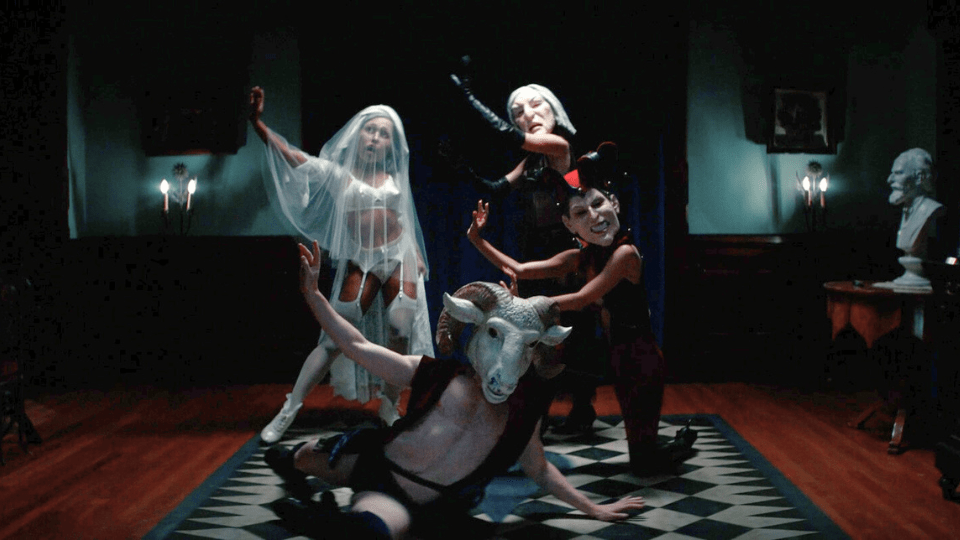Few moments in Severance are as disturbingly surreal, or as symbolically rich, as the now-infamous Waffle Party ritual. At first glance, it’s just a strange corporate reward: an organised pile of waffles for a job well done. But when we see what it entails, it unravels into something much darker, something closer to a ritual than a party, where intimacy is distorted, performance is required, and the line between reward and control disappears entirely.
The Waffle Party is reserved for Lumon’s "Refiner of the Quarter," an accolade that, curiously, always seems to go to Dylan. It takes place deep within the Perpetuity Wing, inside a replica of Kier Eagan’s childhood home - a space already charged with sickening symbolic gravity. And while waffles may sound like comfort food, in Lumon’s hands, they’re the opening act to something profoundly disquieting.
Performance As Reward For Performance
The Waffle Party in Severance begins with the breakfast but ends with a performance that’s anything but nourishing. After finishing his waffles, Dylan is led to Keir Eagan’s bedroom. There, wearing a porcelain Keir mask, he sits on the bed, only to be greeted by a surreal and sensual interpretive dance from masked performers.
This is where things tip from eerie to outright cultish. The Waffle Party is staged like a semi-religious ceremony, with movements and costumes that feel ritualistic, symbolic, and oddly sexual. Dan Erickson, the show’s creator, has explicitly said that the Waffle Party commodifies sex and intimacy, transforming something deeply human into an instrument of corporate manipulation. The whip, etched with the four tempers - woe, frolic, malice, and dread - rests ominously on the bed like a relic of a long-lost theology but also a sexual control. Again it’s not just decoration; it’s doctrine.
The party mimics the famous painting of Kier taming those same four tempers, suggesting that Lumon doesn’t just reward good behavior - it demands psychic subjugation.
What Is the Waffle Party For?
The most haunting question posed by the Waffle Party Severance isn’t just what happens - it’s why? What function does this bizarre ritual serve in Lumon’s corporate machine? For the Innies, whose memories and experiences begin and end at the office door, sex, pleasure, and intimacy are uncharted territory. The Waffle Party may be their only exposure to something even approximating physical or emotional closeness but Lumon provides it on their own terms and uses it to encourage obedience and continued performance.
In that sense, the Waffle Party satisfies a biological or emotional need in the same way authoritarian systems provide "approved" pleasures: as tools of control. Ben Stiller, who directs the series, called the Waffle Party a "semi-religious sexual event cult," and that language matters. Lumon positions itself as more than just an employer, it is a belief system. And in that system, joy, intimacy, and even physical expression are doled out as performance-based perks.
Not only does this mirror certain real-world religious institutions, but it also highlights how corporate culture can adopt quasi-spiritual power over its subjects.
Ben Stiller, who directs the series, called the Waffle Party a "semi-religious sexual event cult".
The unsettling genius of the Waffle Party Severance lies in how it manipulates psychological need. Sex and pleasure are not offered freely, but transformed into highly choreographed, nearly sacred rituals all linked to Kier Eagan's life. The presence of the whip, the absence of spontaneity, the bizarre eroticism - it’s all designed to blur the lines between reward, obedience, and submission. And let’s not forget the setting: a child's bedroom, meant to resemble the birthplace of Lumon’s founder. The implication is unsettling. By combining the aesthetics of a religious initiation, a sexual performance, and childhood nostalgia, Lumon collapses boundaries between the personal, the spiritual, and the corporate. It reeks of religious trauma to the viewer.
Everything - including pleasure - is appropriated to serve the company’s mythology. Even Adam Scott’s character, Mark, hints that he may have attended such parties before, but each time, it feels new, strange, slightly altered.
The Waffle Party in Severance is not a perk, it’s reinforcing a message and using sex as a manipulation tool. It says that even your most private human experiences are subject to Lumon’s design. You’ll get joy, affection, even desire but only as part of a script, a ritual, a reward for compliance. It’s a distilled reflection of everything Severance is trying to tell us about power. And in the world of Lumon, even pleasure comes with a price.














